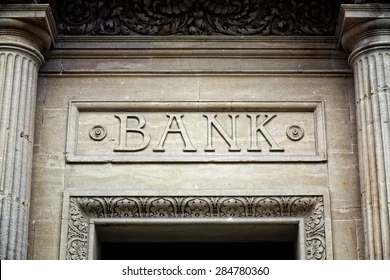Welcome to TIME FX LTD
- +44-20-8987-8083
- 20 Wenlock Road, London, England, N1 7GU
- hello@timefx.co.uk
Welcome to TIME FX LTD


The history of banking and money transfers spans thousands of years, reflecting the evolution of trade, technology, and human needs. From the early barter systems to the sophisticated electronic transactions of today, the journey of money transfer is a testament to human innovation and the quest for efficiency in trade and commerce. This article explores the history of banking and money transfers, examining how financial systems have transformed to meet the demands of each era.
A. Barter Systems
In ancient civilizations, people relied on barter systems to exchange goods and services. The concept of money did not exist, so individuals traded items of value, such as livestock, grain, or tools. Barter was effective but limited by the need for a “double coincidence of wants,” meaning that both parties needed to want what the other had to offer.
B. Emergence of Commodity Money
Around 3000 BCE, commodity money was introduced as a more efficient alternative. Early forms of commodity money included items like shells, livestock, and grains. In Mesopotamia, silver rings served as a form of standardized currency, allowing people to exchange goods and services more easily.
C. The Invention of Coins and the First Money Transfer Systems
Around 600 BCE, the Lydians (in modern-day Turkey) created the first known coins made from electrum, a natural alloy of gold and silver. This innovation was revolutionary because it established a standardized, durable, and portable form of money. Coins were soon adopted by other civilizations, including the Greeks, Persians, and Romans, facilitating trade across vast distances and laying the groundwork for more complex financial systems.
A. Early Banking Practices in Ancient Civilizations
Banking has ancient origins, with early forms emerging in Mesopotamia, Egypt, and Greece. Temples and palaces served as safe places to store valuables and even offered loans at interest rates. In Ancient Greece, private bankers known as “trapezitai” provided loans, exchanged currency, and safeguarded deposits for merchants.
B. The Development of Bills of Exchange in the Middle Ages
In medieval Europe, long-distance trade required secure ways to transfer wealth. The invention of the bill of exchange in the 12th century allowed merchants to transfer funds without the need to carry physical coins, reducing the risk of theft. Bills of exchange enabled a merchant to promise payment to a supplier in a different location, a precursor to modern checks and wire transfers.
C. Emergence of Banking Families
Prominent banking families, such as the Medici family in Italy, rose to prominence in the Middle Ages. They developed complex financial instruments and provided loans to European monarchs, playing a crucial role in the development of early banking systems. The Medici also established the first banks in various European cities, introducing practices such as double-entry bookkeeping, which became a cornerstone of modern accounting.
A. Establishment of Central Banks
The concept of central banking emerged in the 17th century. The Swedish Riksbank, established in 1668, is considered the world’s first central bank. The Bank of England, founded in 1694, played a similar role in the UK. Central banks became responsible for issuing currency, managing government funds, and maintaining economic stability.
B. The Rise of Commercial Banking
In the 18th and 19th centuries, commercial banks flourished. These institutions began offering a range of services, including deposit accounts, loans, and currency exchange. They became essential for financing industrial enterprises, facilitating trade, and driving economic growth. Banking giants such as Barclays and JPMorgan Chase trace their origins to this period.
C. Evolution of Paper Money and Checks
As banking systems evolved, so did methods of payment. Paper money, first introduced in China during the Tang Dynasty (618-907), spread to Europe by the 17th century. Banks issued promissory notes as a form of paper money, representing a claim on the bank’s reserves. The use of checks also became widespread, enabling customers to make payments without carrying physical cash.
A. Introduction of Wire Transfers
The 19th century saw the invention of the telegraph, which enabled banks to transmit money electronically. Western Union, originally a telegraph company, pioneered the concept of wire transfers in 1872, using telegraphic signals to facilitate money transfers across long distances. This was a significant milestone, allowing for faster and more secure transactions.
B. Emergence of Payment Cards
The 20th century brought the development of payment cards. In the 1950s, the Diners Club card became the first charge card, followed by the American Express card. In 1958, Bank of America introduced the BankAmericard, the precursor to modern credit cards. Payment cards revolutionized commerce, providing consumers with convenient access to credit and laying the foundation for today’s digital payment systems.
C. Advent of Automated Teller Machines (ATMs)
The first ATM was introduced by Barclays in London in 1967. ATMs allowed customers to withdraw cash, check balances, and perform basic banking functions without visiting a bank branch. ATMs became widespread by the 1980s, making banking services more accessible and convenient for consumers.
D. SWIFT Network
In 1973, the Society for Worldwide Interbank Financial Telecommunication (SWIFT) was established to standardize and streamline international payments. SWIFT created a secure messaging network that allowed banks to exchange financial information, making cross-border transfers faster, more secure, and more efficient. Today, SWIFT connects thousands of financial institutions worldwide.
A. Online Banking
The 1990s saw the rise of the internet, which transformed the banking industry. Online banking allowed customers to access their accounts, transfer funds, and pay bills from the comfort of their homes. Banks embraced digital channels to reduce operational costs, improve customer service, and expand their reach.
B. Mobile Banking
With the proliferation of smartphones in the 2000s, mobile banking became a popular option. Mobile apps enabled customers to perform banking transactions on the go, from checking balances to making payments. Mobile banking has since become an essential feature for banks, with millions of customers relying on it for their daily banking needs.
C. Rise of Fintech and Digital Wallets
Fintech companies have disrupted traditional banking by offering innovative solutions, such as peer-to-peer lending, robo-advisors, and digital wallets. Digital wallets, such as Apple Pay, Google Wallet, and PayPal, allow users to make payments using their smartphones, eliminating the need for physical cash or cards. Fintech has made banking more accessible, particularly for underserved populations.
D. Blockchain and Cryptocurrencies
Blockchain technology has introduced new possibilities for banking and finance. Cryptocurrencies, like Bitcoin, use decentralized networks to transfer value without intermediaries. While the mainstream adoption of cryptocurrencies remains limited, blockchain technology has the potential to revolutionize payments, making them faster, cheaper, and more secure.
As technology continues to advance, the future of banking and money transfers holds exciting possibilities.
A. Artificial Intelligence and Machine Learning
AI and machine learning are transforming banking by enabling predictive analytics, fraud detection, and personalized financial advice. AI-powered chatbots and virtual assistants are improving customer service, while machine learning algorithms help banks make data-driven decisions.
B. Real-Time Payments
Real-time payments (RTP) are becoming the norm, enabling customers to transfer funds instantly. RTP systems are gaining traction worldwide, providing businesses and individuals with immediate access to funds, which is crucial for cash flow and financial management.
C. Open Banking
Open banking initiatives are reshaping the industry by allowing third-party developers to access bank data (with customer consent). This fosters competition, innovation, and improved financial services. Open banking empowers customers by giving them greater control over their financial data and enabling personalized financial products.
D. Biometric Security
As security concerns grow, banks are increasingly using biometric technology, such as facial recognition and fingerprint scanning, to protect customer accounts. Biometric security enhances safety and reduces the risk of fraud, ensuring that banking transactions are secure and seamless.

The history of banking and money transfers is a journey of evolution, innovation, and adaptation to meet the changing needs of society. From ancient barter systems to modern digital transactions, each era has contributed to making banking faster, safer, and more accessible. Today, banking is on the cusp of another transformation, driven by advancements in artificial intelligence, real-time payments, and open banking.
As we look to the future, the emphasis on convenience, security, and accessibility will continue to shape the industry. Understanding the history of banking and money transfers helps us appreciate the complexities of modern financial systems and the potential for even greater innovations ahead.